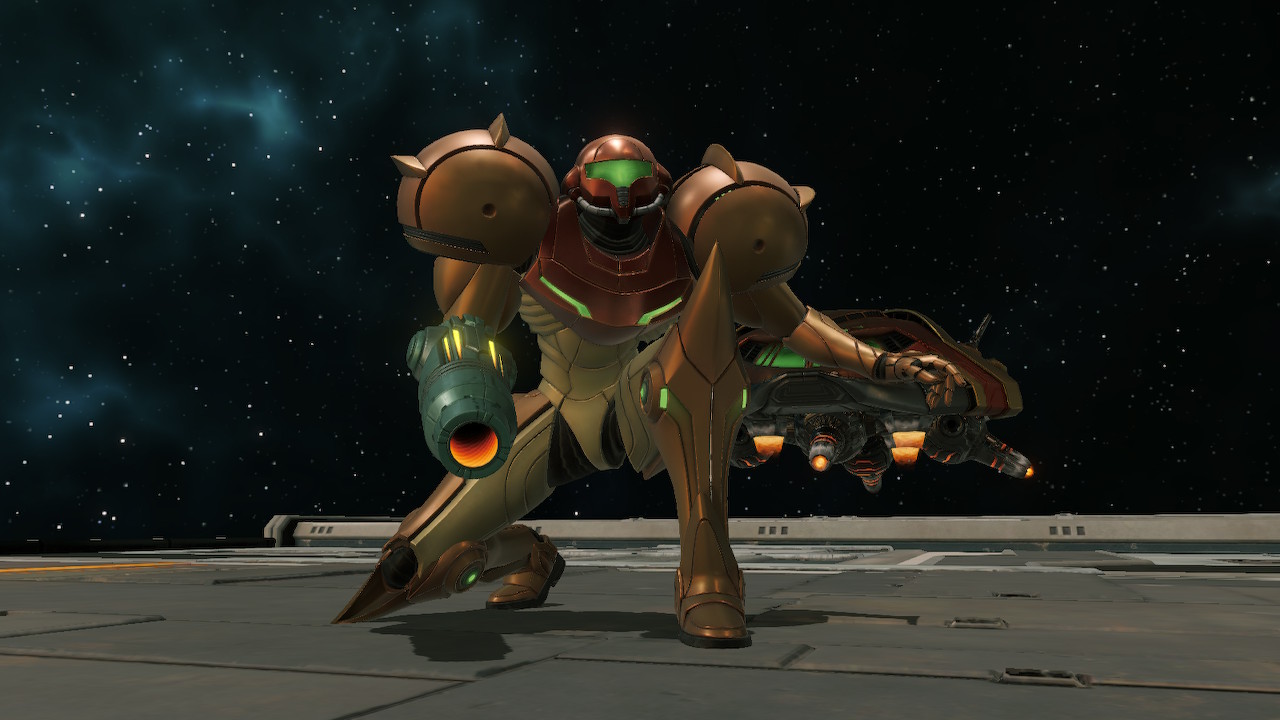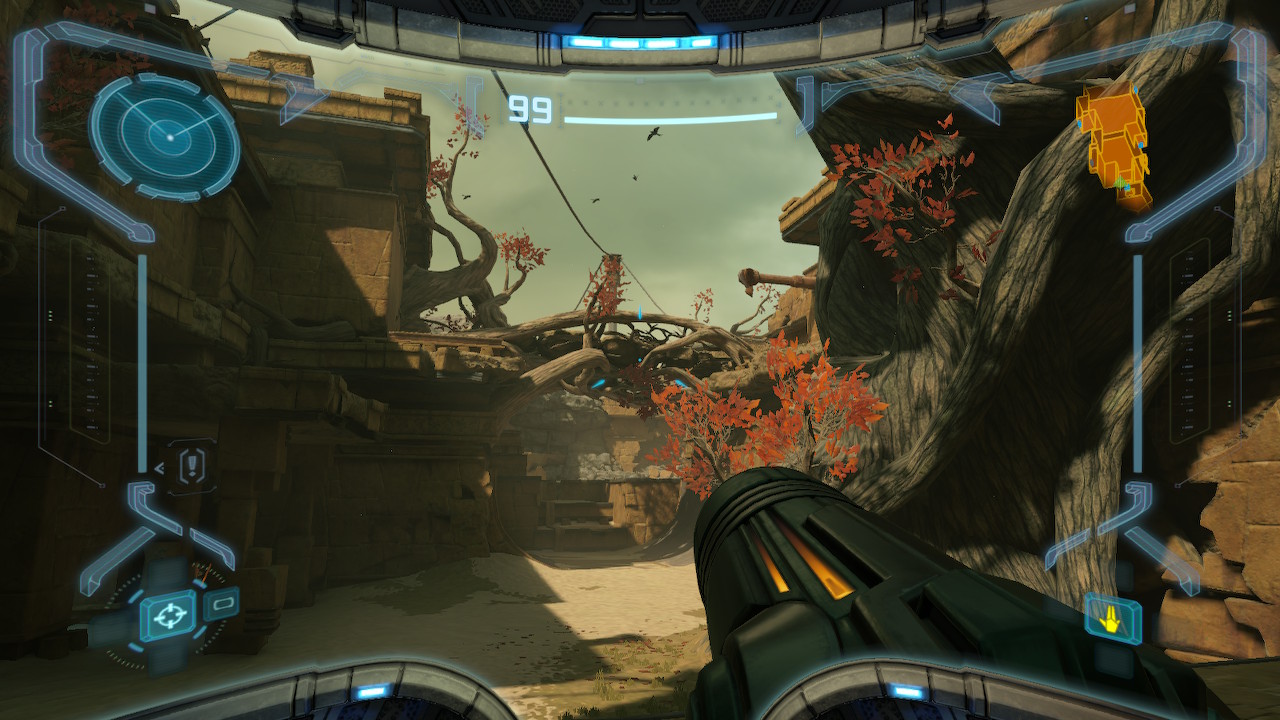The Nintendo Gamecube may not have lit the world on fire when it came to sales, but it surely had some of Nintendo’s strongest first party software that are even highly revered today. It is true what they say: when a console manufacturer is on the backfoot and making their case for survival, some of their strongest creative endeavors are born. And for Nintendo, none are more highly revered and beloved than the Metroid series’ first official foray into the 3D space: Metroid Prime.
At a time when Nintendo was still competing on equal footing with both PlayStation and Xbox before they decided to march to the beat of their own drum, Metroid Prime was a crucial point in proving that they had the chops to stand on equal footing and, at times, surpass their competitors. The original release of Metroid Prime broke ground in proving that the Metroid franchise’s trademark style of design exploration (nowadays known as the “Metroidvania,” the term associated with it and fellow franchise “Castlevania”) could work really well in a 3D environment. Not only did it work, it managed to do it in as unconventional a perspective as one could think of for the franchise while managing to stay true to its roots. On top of that, it was a visual tour de force, proving the Gamecube’s graphical prowess in the right hands. I was reminded of all of these elements while playing through the recently released Metroid Prime Remastered for the Nintendo Switch.
For the uninitiated, Metroid Prime puts you in the shoes (or behind the visor) of iconic heroine, Samus Aran, as her quest to eradicate the Metroid threat takes her down to the planet of Tallon IV after a small skirmish at a pirate frigate that leaves her stripped of her gear. The planet suffered a corruption from a substance called Phazon after a meteorite crashed on the planet at an undetermined time. As Samus explores the ancient ruins of the areas surrounding the Impact Crater, she plays detective/scientist as she pieces together what happened to the Chozo civilization and arms herself to eradicate the threat at the heart of the crater.
Even with that little bit of story synopsis, the truth is that Metroid Prime is a very story-lite game, relying a lot on your scanning visor mechanic to learn a lot of lore and the story of Tallon IV. This is done in service of putting the authorship of the story in the player’s hands, where they can engage or disengage on the details about what happened to the planet without ever interrupting the flow of play. And it works well, as the Metroid series’ trademark style of exploration and discovery is the true meat and potatoes of the game.
And what a joy it is to explore in this game. The planet of Tallon IV oozes a bespoke eeriness that still stands out years since this game’s original release. From the decrepit remains of the Chozo Ruins, the dangerous fire pits of the Magmoor Caves, the quiet cold eeriness of Phendrana Drifts, and other cool looking, eerie locales, the environmental diversity of Metroid Prime makes the constant visits to said locales a treat to explore. All of the environments are so intrinsically designed, you’ll be shocked how often you’ll return to said locales and realize just how much was hidden in plain sight prior to acquiring future equipment upgrades. It helps fight any sense of monotony considering how often the game’s flow requires constant revisits to these places.
With all the action framed behind Samus’ visor, it is easy to think of Metroid Prime as just a first person shooter. However, all of the combined elements make this more of an action adventure game that just so happens to be from a first person perspective. You’ll spend as much time fighting the different Space Pirates and various monstrosities as you will exploring, scanning, and analyzing your environments, progressing from area to area and solving the various environmental puzzles. In combat, a simple combat system that initially only gives you Samus’ power beam and missiles grows to include different variations of those beams, including the Wave Beam, the Ice Beam, and the Plasma Beam. While some enemies can be a bit on the annoying side with how many shots they take to go down, figuring out which is the best beam to deal with them in the later half of the game gives the combat more oomph when it threatens to grow stale. As for exploration, later upgrades, including the thermal and x-ray visors, provide an extra level of depth to both exploration and combat (especially when invisible enemies enter the fray).
If there was an issue in the game’s original release which has been fixed mightily with the Nintendo Switch re-release, it was the original control scheme. Released a year after Halo: Combat Evolved set the industry standard for how first person shooters should handle on consoles, the Metroid Prime control scheme was…peculiar to say the least. There was no true dual stick functionality, and the shooting was mapped to the face buttons with a reliance of a lock-on button. Taken on its own merits, the game worked relatively well with how it was designed (with the sequel Metroid Prime 2: Echoes showing the harsher limitations of that control scheme), but it was a tough one to experience if you had just come into contact with how a first person shooter was supposed to control.
The Wii release of this game on the Metroid Prime Trilogy from 2009 introduced a more traditional shooter control scheme with the motion controls (which is an option included in this Switch version and works just as well as it did on that Wii version), and now Metroid Prime Remastered shows how well this game works with a traditional, honest to goodness FPS control scheme. Combat feels transformed with the added precision of the second analogue stick, making some of the later combat encounters way more palatable since strafing has finally been unshackled from the lock on button. Granted, the lock on button is still there and a necessity, but with the new traditional control scheme included, it works wonderfully. If you are a purist and want to experience the game as originally designed, thankfully there is an option to play it like that, and it is easily accessible in the Options menu. To me, barring the only setback being a rather awkward setup to how you switch your Beam options around (holding X + DPad), I can’t imagine ever going back to that original GameCube setup. It’s THAT transformative.
Being that this is called Metroid Prime Remastered, and this being Nintendo who are the kings of the minimal viable product when it comes to overpriced remasters (looking at you, defunct Super Mario 3D All-Stars and The Legend of Zelda: Skyward Sword), I’m honestly pretty shocked at the quality of the work done to Metroid Prime. At first glance, what seemed like a case of, “This looks how I remember it looking, just now in HD,” turned into something more the deeper I got into it. The remaster work done by Retro Studios, Iron Galaxy, and the various developers who assisted in the project went above and beyond what I had expected from this re-release. A lot of the assets were redone while still maintaining the defining quality of the Metroid Prime art style. On top of that, the silky smooth 60fps frame rate from the original release was kept intact, which, on a system as under-powered as the Nintendo Switch that has struggled to render many recent games at a respectable resolution and framerate, feels magical and unreal.
Even when played in handheld mode, the game maintains the right amount of sharp graphical detail and smooth framerate. Some may say, “Well of course it can, it’s a game from 2002.” Given that it’s not a simple “File > Save As” port, the fact that it runs as well as it does, looking as good as it does, shows just how FAR ahead of its time the original GameCube game was. Yes, it’s a remaster, but this is easily the most technically proficient Nintendo Switch game yet. And that soundtrack by Kenji Yamamoto? *Insert Chef’s Kiss.
Are there any problems worth noting? For a game as old as this one, sure there are a few. Although I love the game’s sense of exploration and discovery, and getting to visit the different looking biomes, the flow of when to go from one to the next does eventually get a little too exhausting later in the game, hampering a bit of the flow. It really does feel like the game may take you from one far side of the map in a biome to another far side of another biome, back and forth. While the game tries to spice it up with some changing enemy formations in consequent visits, don’t be surprised to roll your eyes in the later game when it feels like you are constantly going back and forth often. This was before the era of the fast travel, which wouldn’t be introduced into the Metroid Prime franchise until its sequel, Metroid Prime 2: Echoes. So, expect to be doing lots of walking, which will then take you through a couple of brief but kind of annoying elevator rides.
The game is relatively well balanced in the difficulty, but it does have some nasty spikes in the later parts which also come with long stretches without a Save Point (and the game doesn’t have autosave, so be aware). Finally, the game has one extended fetch quest to acquire 12 Chozo keys to unlock the final boss area. Unless you got into the Impact Crater early on after acquiring your missiles to naturally start finding these keys on a normal run of play, if you leave the Impact Crater as your absolute final thing to do, prepare for an extended fetch quest reminiscent to the Triforce quest from The Legend of Zelda: The Wind Waker. At least this one allows you to start it early and gives you obvious clues as to where to find these keys, which was a smart design choice. Still, it’s a late game fetch quest that could derail your momentum. If you plan to play this game for the first time, FIND THE IMPACT CRATER EARLY!
Nintendo is always renowned as the early trail blazers of the industry, breaking new ground for gaming to grow for years to come (recently seen with the way they reshaped expectations for open world games with 2017’s The Legend of Zelda: Breath of the Wild). If anything, “Metroid Prime Remastered” is a perfect reminder of the ways that Nintendo helped to shape the industry, but it’s also a reflection that sheds light on a greater creative void from Nintendo since that original 2002 release. At $40 from Nintendo of all companies, and at this level of care, it is a no-brainer. The finest game of the Nintendo GameCube finally got a reissue worthy of its name and esteem. The bar is quite high for the eventual release of Metroid Prime 4. Now, give us Metroid Prime 2: Echoes and Metroid Prime 3: Corruption soon, Nintendo!
You can find Seasoned Gaming’s review policy here









